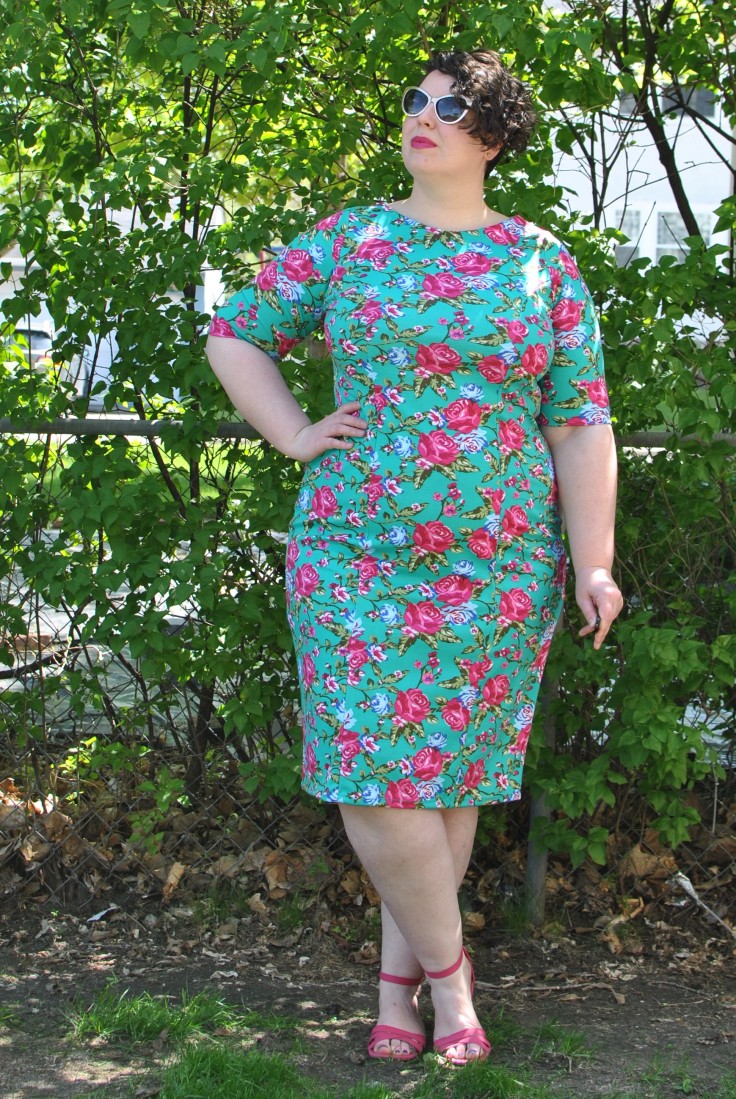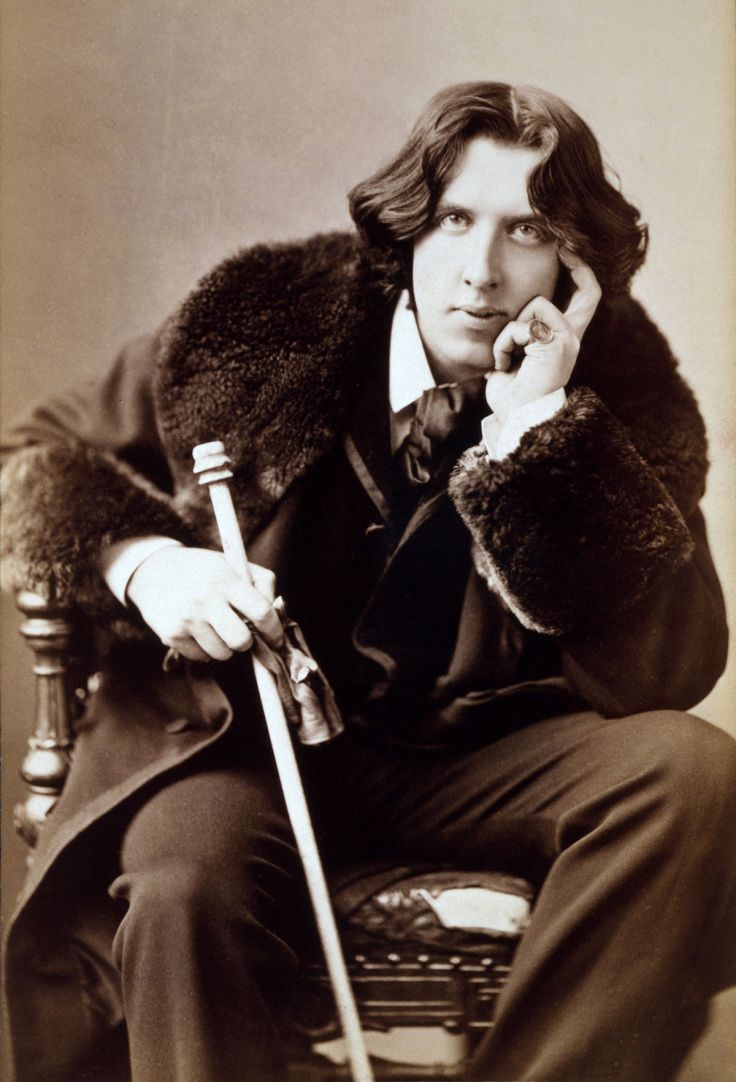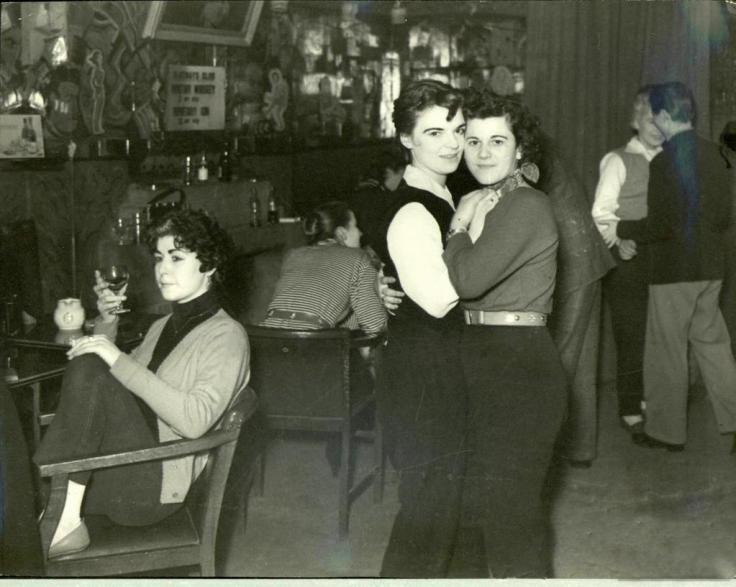Sew Queer is a series exploring the intersections of sewing and queer identity. To participate, use the hashtag #sewqueer or visit @sewqueer on instagram.
This spring I made a dress.

I love this dress! The fabric, a floral ponte, is lush and soft and gorgeous, and I’m proud of my ability to draft a pattern that fit just the way I want it to based off a RTW dress. I like the way it turned out and I like the way it looks on me. It, too, gets a really positive response when I wear it: compliments from strangers on the street and the most likes I ever get on Instagram.
And I feel kind of weird about that.
Not about anyone’s genuine sentiment: I love and adore every comment given by my friends, IRL and extended via the internet. I do love this dress, and I like that other people do too! And yet, there’s something about the overwhelming love for this dress, this particular dress, that makes me feel disingenuous, or at least a little uncomfortable.
On Facebook, a family member said this dress was the best one I made this summer, and a friend said it was quintessentially me; I don’t disagree, not precisely, but if it’s so very me it’s only a part of me. I feel weird because I don’t think I’ve been pushing myself to be more fully expressive of the rest of me, at least not through my sewing.
I call my style femme dandy, which I identify as an androgynous mode of gender expression and self-fashioning concerned not with minimizing the differences between binary-gendered modes of expression but heightening and juxtaposing them. Femme dandy embraces lushness and texture, it power clashes and plays with expectations, it is a way of being and moving in the world that demands attention. Each term, too, calls back to particular historical modes of presentation, each with deep traditions across multiple locations and within many racial and ethnic communities: the foppish, fastidious dandy and the lipsticked and wry femme.
While not all dandies are queer, the dandy style of dress is undoubtedly embraced in many queer circles, both presently and historically. It’s Oscar Wilde in velvet and furs, it’s silk smoking jackets and elaborate cravats.

Femme, on the other hand, as a method of gender expression has its roots almost entirely in queer subcultures (despite its recent cooptation by corporate America, femme isn’t just a synonym for “feminine” and shouldn’t be stripped of its queer roots). Femme is women dancing at the Gateways, it’s the ability to alternately pick up and refuse the markers of femininity, it’s the sly awareness that all gender is a performance, after all, it’s a trickster gender.

This historical continuity carries significance: in picking up these terms, I remind myself that people have lived, loved, and moved through this world in so many different ways, have found joy in expression and power in the things they put on their bodies. I remind myself that there are more ways of being than we see celebrated in our standard histories and our mass media and that queer life is not, has never been, only made up of pain. There is joy to be had — such joy! — and I can wear it on my body, can carry it with me.
So: this spring I made a dress. It’s a dress for pink lipstick and pink shoes, for underpinnings that highlight perfect sculptural curve of my hip, for days to bask in the sunshine-brightness of northern springs when the sun arrives before the flowers. It’s a high femme dress, made intentionally for gender pageantry of the brightest and cheeriest sort.
But if I limit myself to making dresses, to the familiarity of a princess seam and carefully honed attention to the curve from my waist to my hip, I’m missing out on a whole part of expression I so dearly want. Dresses, in many ways, are easier: there are far more patterns available for dresses than for tailored separates, and they are often drafted for someone with proportions somewhat similar to mine. I also have more practice making them and know instinctively which alterations will be likely. But they’re also easier because of how, as I move through the heteronormative world, femme so easily elides into feminine. Dresses feel less challenging at times, like they take less emotional armor to wear.
So with this series, and with my sewing practice moving into 2018, I plan to push myself harder to create a wardrobe that reaches fully across the spectrum of femme dandy. My to-sew list includes three piece suits and carefully tailored shirts and, yes, some dresses as well. I’m terribly excited about this, and I hope you’ll come along with me.
Do you have queer sewing feelings to share? Post using the #sewqueer hashtag or visit @sewqueer on instagram to connect with other queer sewists!

I dont have much to say, except that I’m super excited to read more on this, and that I’ll rush to follow that IG. Sewing can feel like such a “straight” hobby at times, it’s awesome to get a chance to chat with other queer sewists and to explore what it means for us all to sew!
(plus, femme dandy… Loving the term, loving the concept!)
LikeLike
Hello and welcome! I was really happy to see your intro post over on Instagram as well – I id as demisexual and I love to see more visibility of folks under the general Ace umbrella. I agree that sewing can feel really straight sometimes so I’m SO happy folks are picking this up and coming together.
LikeLike
Dearheart. This dress is soooo Genderqueer, fem* dandy sylin’
It’s NOT a fabric pattern commonly used in nonqueer, nonstylin, nondandy dresses!!
It’s fitted and accented in ways not a SUNGLE outfit of any sort of Roamans, WomanWithin or LaneBryant EVER MADE! It just ain’t a thing FAR Women wear cuz a(we can’t find it
b)culturally it rubs against alla the antiFat biases and prejudices, you listed so well
c) YOU make it QueerDandy in how you’ve styled it, and how you’re wearing/stylin’ it. Sass pride comfort sexiness gorgeousFatness, etc.
So it is NOT just any old 1000 patterns of dresses available. Don’t worry ‘bout falling into no such traps! All thise obvious and subtle things add it up ti being quite queer (whi besides fatdykes really deeply incirporate selfidentities a glad-I’m-fat women?) AND Dandy.
Envision that picture in a styled up prohibition era dance?? Might have a small & red offcenter hat with a small fluffy red feather added, but would definitely fit with the other Dandies!!
Don’t feel guilty or worried that yer a fat queer woman who rocked the hell out of a dress! We get to (proudly) wear them too!
(*long digression here, lol, it’s too hard for me to omit contextual info….
btw, “fem” is the herstorical, originalworkingclass butch/fem dyke cultural way of spelling it — when college, middle class lesbians got ii, they upcultured it classwise to be/look more “French”, as in “femme,”. i.e. acceptable, upcultured, etc. similar to how/why obviously butch upperclass lesbians were instead (mis)called “androgynous” — picture those butchy upper class early writers and such, even the one infamously in Well Of Loneliness.
I can’t recall offhand if it were Amber Hallibaugh, Madeline Davis, Joan Nestle, Dorithy Alison (FAVE fem writers of mine!) who first published something about this… in 1980s-1990s sometime…
But it’s also part of our lesbianqueer culture easily lost cuz of predominance of middleclass culture. Especially in published writings, ubiquitously using “femme” and having the gall to @correct” thise who write “fem”!
Oh & btw, here in the middle midwest? Nearly all of the African American butches I know prefer being called “Stud.” A good/fun way to get a smile, too, in the right conversation! Especially from those of us not normally expected to be savvy ‘bout African American lesbian/dyke/“got a little sugar in his tank” cultural items. )
Okay digressions done. Can you tell I’m one who LOVES this totally Dandified Queer pucture of you?
And I want a maxi that fits my Goddess-Suzedfat self even half so well!
LikeLike
Thank you thank you! I do think this dress is SO queer the way I made it and wear it, but on its own — or if I only stuck to making dresses — I wouldn’t be encompassing ALL of my queerness, you know? So I’m working on ways of branching out and creating all the different queer femme dandy ways I want to be! I get read as straight a lot, especially when my hair’s longer, so I’m always so interested in the difference between how I’m understanding how I wear my clothes, how that’s picked up on by fellow queers, and how that difference can so often be totally lost on straight people!
And thank you for the historical note – I’ve seen both femme and fem used, though the latter definitely not as often, but I didn’t know much at all about the origins! I’m very much middle class, so while I want to connect with the working class roots of fem, I’m also aware that it’s not the same as my own experience. But I do love that there’s such a wealth of terms with such rich histories.
LikeLike
P.S. please excuse my fat-fingers on an iPhone, inadvertent misspellings!! Please?
LikeLike
Thank you for this. I taught myself to sew 7 years ago, beginning with quilting and throw pillows. I never really thought I’d be able to learn to make clothes, but as I grew more confident in my skills and looked for ways to challenge myself, sewing clothing was the next frontier. Sewing skirts was my way into clothes-making, because they are the least intimidating. But that forced me to grapple with that part of my identity that I had been able to brush aside before. I don’t mind wearing skirts, but I don’t want to be seen wearing skirts. I don’t want to be seen as femme, or butch, really. I exist in this middle land of gender expression where I have mostly avoided making a statement. I, like you, love the tailored shirts, vests, and blazers of the dandy style, but I am still working my way up to that, both skill-wise and comfort-wise. In the meantime, I have used my passion for history as an excuse to make historical clothing (including corsets, yikes), while learning skills that I hope will help me in finding my own style. Anyways, it’s so great to hear from other queer sewists who have also examined their identity through their craft. I didn’t know there were others out there like me.
LikeLiked by 1 person
Thank you so much for sharing! I’m so interested in your detour into historical clothing, actually; I’ve also been thinking about my own predilection towards costume-ish outfits and making things that fall well outside the realm of my everyday wardrobe and how that relates to my experience of identity. I think it’s definitely related to queerness, to an overt awareness of and interest in the way gender is performative, and to a desire to experiment with new ways of signifying identity.
LikeLike
I love this, the dress and the post! I’m really excited to see more and especially the three piece suits you mention. I get so inspired by you, what you wear and what you write. I love love love your William Morris shirt.
LikeLike
Thank you so much! I’m excited to get going on the suits sometime soon!
LikeLike